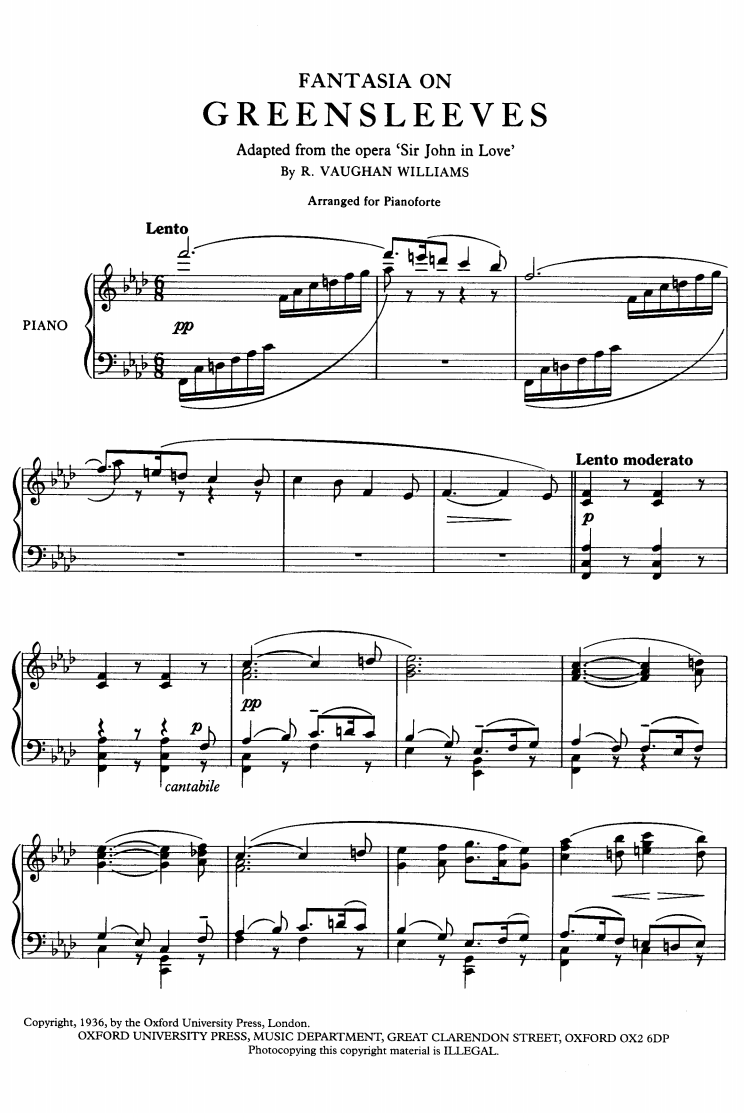Falstaff in Love
Ralph Vaughan Williams (1872 - 1958): Fantasia on Greensleeves for flute, harp and strings. Philadelphia Orchestra; conductor: Eugene Ormandy.
 La Fantasia on Greensleeves è in realtà un arrangiamento, realizzato nel 1934 da Ralph Greaves con l’approvazione di Vaughan Williams, di un brano dell’opera Sir John in Love (1929), basata sulla commedia di Shakespeare Le allegre comari di Windsor. Utilizza non solo il ballad cui si allude nel titolo, ma anche una melodia tradizionale intitolata Lovely Joan, che Vaughan Williams aveva ascoltato nel Suffolk.
La Fantasia on Greensleeves è in realtà un arrangiamento, realizzato nel 1934 da Ralph Greaves con l’approvazione di Vaughan Williams, di un brano dell’opera Sir John in Love (1929), basata sulla commedia di Shakespeare Le allegre comari di Windsor. Utilizza non solo il ballad cui si allude nel titolo, ma anche una melodia tradizionale intitolata Lovely Joan, che Vaughan Williams aveva ascoltato nel Suffolk.
 The Fantasia on Greensleeves is actually an arrangement, made in 1934 by Ralph Greaves with the approval of Vaughan Williams, of a piece from the opera Sir John in Love (1929), based on Shakespeare’s play The Merry Wives of Windsor. It uses not only the ballad alluded to in the title, but also a traditional tune called Lovely Joan, which Vaughan Williams heard in Suffolk.
The Fantasia on Greensleeves is actually an arrangement, made in 1934 by Ralph Greaves with the approval of Vaughan Williams, of a piece from the opera Sir John in Love (1929), based on Shakespeare’s play The Merry Wives of Windsor. It uses not only the ballad alluded to in the title, but also a traditional tune called Lovely Joan, which Vaughan Williams heard in Suffolk.






